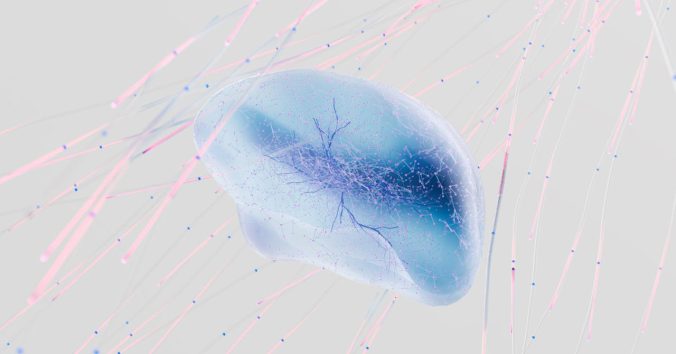One of the most timeless TV crime series is probably Columbo. Peter Falk plays an inquisitive police lieutenant who sometimes seems so far beyond ordinary time reckoning that he can make Los Angeles resemble ancient Athens, where an equally inquisitive philosopher cared just as little about his appearance.
I hope you have seen a few Columbo episodes. I also take the liberty of opening this post by revealing why I want to write about him. Because he not only exposes the murderers but at the same time frees them from living entangled in their own brilliant plans. You might remember the unusual disposition of the episodes, that we immediately learn who the perpetrator is. The murderers in the series are distinguished not only by their high social and economic status, but also by their high intelligence (and their overconfidence in it). Before the murder takes place, we get to follow how ingeniously the killer plans the deed. The purpose is to give the appearance of having a watertight alibi, to avoid leaving unintended clues at the murder scene, and to leave those clues that clearly point to someone else. Everything is perfectly thought out: BANG! In the next act, Columbo enters the scene of the murder in his worn coat and with a cigar that has usually gone out. In one episode he arrives with a boiled egg in his pocket which he cracks against the murder weapon when he has not had time to eat breakfast.
The murder was just the prelude. Now the episode begins for real, the interaction between the absent-minded Columbo and the shrewd murderer who planned everything in detail and now feels invincible. Especially considering that the police lieutenant leading the investigation is clearly just a confused poor thing constantly fumbling for his notepad and pencil and asking irrelevant questions. I have soon dealt with this fellow, the killer thinks.
Columbo often immediately knows who the murderer is. He can reveal this in a final conversation with the murderer where both can unexpectedly find each other and speak openly, almost like old friends. Soon even the murderer begins to understand that Columbo knows, even though the lieutenant’s absent-minded demeanor at first made this unlikely. Usually, however, the murderer’s confidence is not shaken by knowing that Columbo knows, for everything is perfectly thought out: Columbo “knows” without being able to prove anything! Columbo spends many sleepless nights wondering about the murderer’s alibi and motive, or about seemingly irrelevant details at the murder scene: the “loose ends” that Columbo often talks about, without the murderer understanding why. They seem too trivial to touch the ingenious plan! The murderer almost seems to enjoy watching Columbo rack his brain with immaterial details that cannot possibly prove what both already “know.” Little does the killer know that Columbo’s uncertainty will soon bear fruit.
Finally, Columbo manages to tie up the loose ends that the murderer did not see the point of (they looked so plain compared to the elegant plan). When Columbo reveals how the alibi was only apparent, how the all-too-obvious clues were deliberately placed at the murder scene, and the murderer’s cheap selfish motive, the murderer expects to be arrested by Columbo. “No, others will come and arrest you later,” says Columbo, who suddenly seems uninterested in the whole matter. Columbo seems to have only wanted to expose the illusory reality the killer created to mislead everyone. The murderer is the one who walks into the trap first. To make everything look real, the murderer must live strictly according to the insidious plan from the very first act. Maybe that is why the murderer often seems to breathe a sigh of relief in the final act. Columbo not only exposes the criminal, but also frees the criminal mind from constantly living trapped in its own calculations.
In the conversation at the end, the otherwise active killer seems numbed by Columbo, calm and without a winning smile. Even the murderer is for the first time happily absent-minded.
How does Columbo manage to uncover the insidious plan? We like to think that Columbo succeeds in exposing the murderer because Columbo is even smarter. If Columbo switched sides and planned crimes, no one could expose him! He would be a super-intelligence that could satisfy every wish, like the genie in the lamp. Sometimes even the murderer seems to think along these lines and offers Columbo employment and a brilliant career. With Columbo as accomplice, the murderer would be invincible. But Columbo does not seem to care more about his future than about his appearance: “No, never, I couldn’t do that.” He loves his work, he explains, but hardly gives the impression of being a police lieutenant, but is sometimes mistaken for a vagrant who is kindly asked to remove himself from the scene of the murder. Nuns can offer him food and clothes. Is Columbo the one actually creating the false appearance? Is he the one with the most cunning plan? Is his absent-mindedness just a form of ironic pretense to lure the murderer into the trap?
Columbo probably benefits from his disarming simplicity and absent-minded demeanor. But although we sometimes see him setting traps for the killer, we never see him disguise himself as a vagrant. When his wife has given him a nicer coat, he seems genuinely bothered by it, as if he were dressed up. Is Columbo’s confusion sincere after all? Is it the confusion he loves about his work? Is it perhaps the confusion that eventually reveals the murderer’s watertight plan?
Columbo’s colleagues are not confused. They follow the rules of the game and soon have exactly the conviction the murderer planned for them according to the manual: the murderer has no motive, has a watertight alibi, and cannot be tied to the scene of the murder. Technical evidence, on the contrary, clearly points in a different direction. If the colleagues were leading the investigation, the murderer would have already been removed from the list of suspects. This is how a colleague complains when he feels that Columbo is slowing down the investigation by not following the plan of the criminal mastermind:
Sergeant Hoffman: Now what do you think Lieutenant, do you really think that Deschler didn’t shoot Galesko in the leg?
Columbo: I’ll tell you something, Sergeant, I don’t know what to think.
The injured Galesko is in fact the murderer. He shot himself in the leg after killing Deschler, to make the killing look like self-defense against “his wife’s kidnapper.” Galseko has already murdered his wife, having staged the kidnapping and planted the clues that point to Deschler. Why did Galesko murder his wife? Because he felt she was obscuring his bright future. The murderers in the TV series not only plan their deeds, but also their lives. Without ideas of bright futures, they would lack motive to plan murder.
Neither the killer nor the colleague suffers from uncertainty, they both sleep well. Only Columbo is awake: “I don’t know what to think.” Therefore, he tries to tie up loose ends. Like the philosopher Socrates in ancient Athens, Columbo knows that he does not know. Therefore, he torments the murderer (and the colleagues) with vexing questions that do not belong to the game, but rather revolve around it. Now you probably want to direct Columbo’s most famous line at me: “Oh, just one more thing!” For did I not say that Columbo immediately knows who the murderer is? Yes, I did. Columbo already “knows” who the murderer is. How? Does he know it through his superior intelligence that reveals the whole case in a flash? No, but because the murderer does not react like someone who does not know. When informed of the murder, the killer reacts strangely: like someone who already knows. Lack of confusion is the hallmark of the murderer.
When Columbo reveals the tangle of thoughts that already in the first act ensnared the murderer, the perpetrator goes to prison without complaint. Handcuffs are redundant when the self-made ones are finally unlocked. Columbo has calmed the criminal mind. The culprit is free from the murder plan that would secure the future plan. Suddenly everything is real, just real.
Just one more thing: Merry Christmas and do not plan too much!
The dialogue between Hoffman and Columbo is from the episode Negative Reaction (1974). Columbo’s response to the career offer is from The Bye-Bye Sky-High I.Q. Murder Case (1977).
The image is AI-generated in Microsoft Designer by Ashkan Atry.
This post in Swedish
Thinking about thinking














Recent Comments